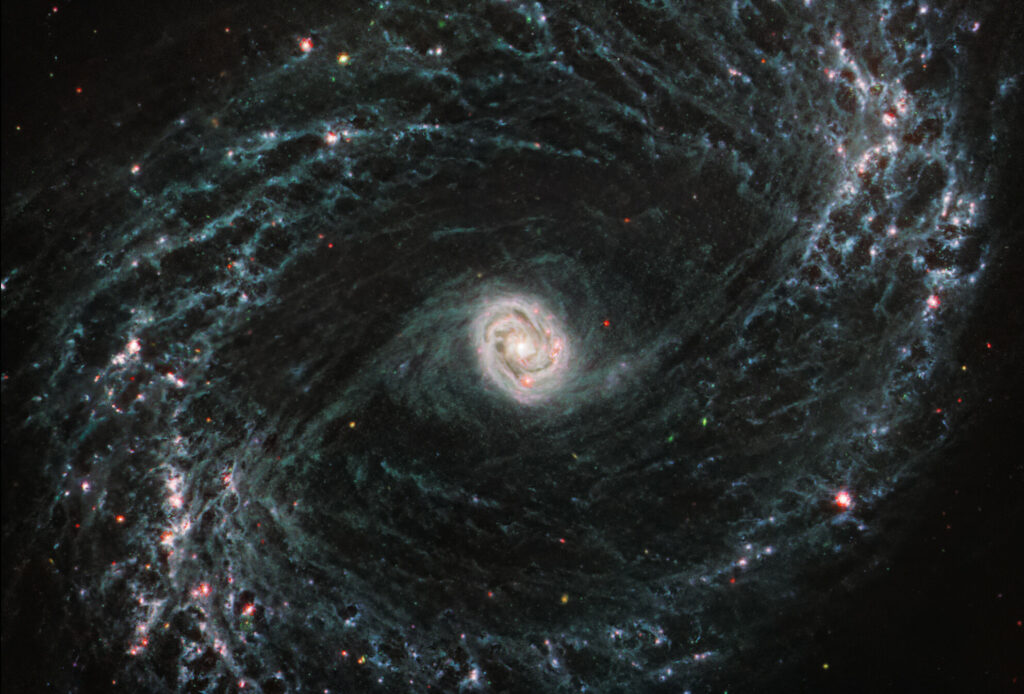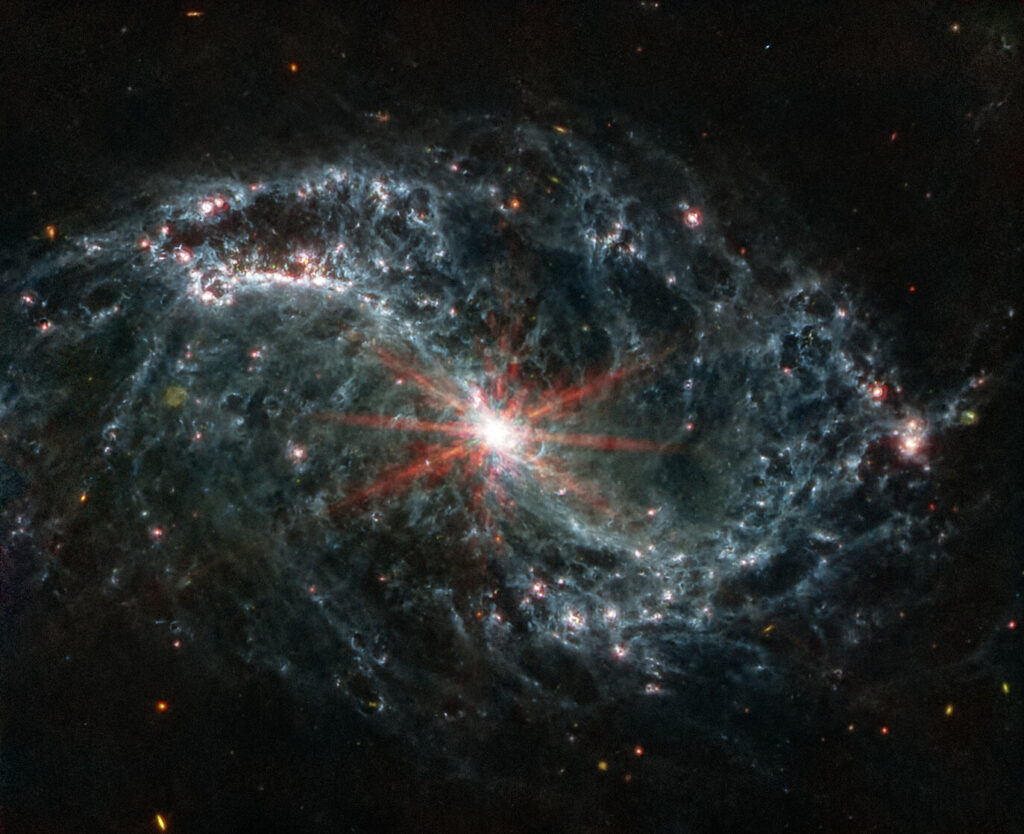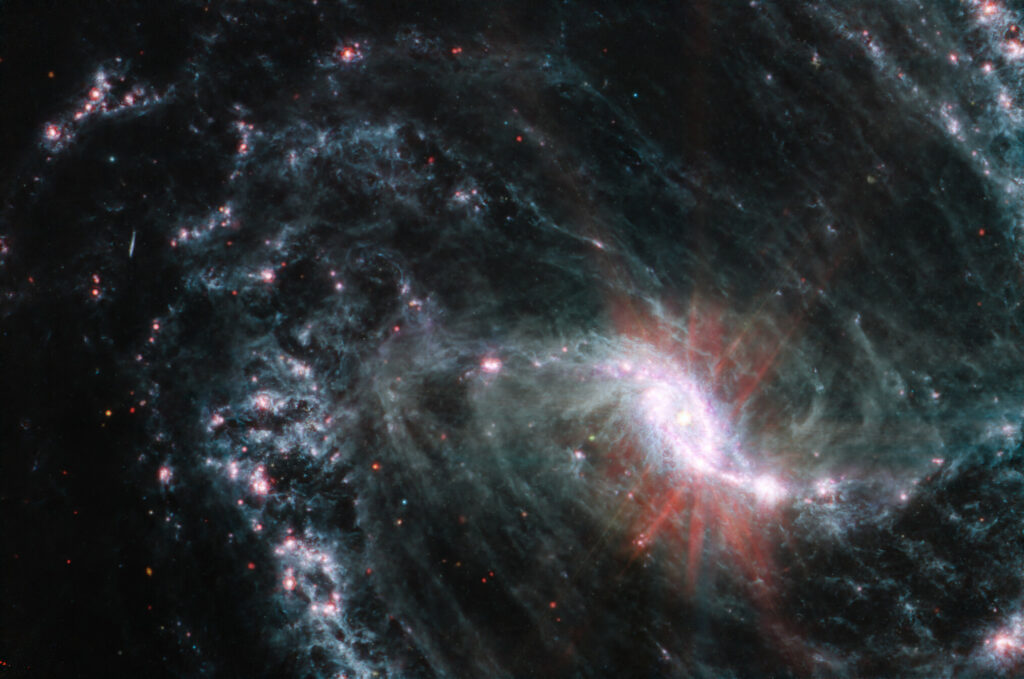Thanks to the James Webb Telescope (JWST), astronomers have been able to study the internal structure of neighboring galaxies with unprecedented resolution. Subsequent analysis of the data resulted in the publication of 21 articles that provided a new insight into how star formation processes affected galactic evolution.

The observations were made during the PHANGS research program, which aimed to study 19 nearby spiral galaxies. In the first months of its operation, JWST photographed five of them. We are talking about galaxies — M74, NGC 7496, IC 5332, NGC 1365, and NGC 1433.
The images taken by JWST in the mid-infrared range revealed a network of highly structured elements — consisting of dust glowing cavities and huge gas bubbles lining the spiral arms. It is formed as a result of the activity of young stars that “blow out” gas and dust from their surroundings. In some parts of galaxies, these cavities and bubbles overlap each other.

According to astronomers, before the appearance of JWST, the network eluded their attention. In the Hubble images, these areas were completely darkened. But thanks to its ability to take pictures in the near and especially middle infrared range, JWST is able to penetrate through the dust curtain. Its photos demonstrate how interstellar dust absorbs light from newborn stars. Then it emits it back in the infrared range, highlighting a complex gas-dust structure.

It is also worth noting that certain wavelengths at which JWST is capable of conducting observations (for example, 7.7 and 11.3 microns) are sensitive to the radiation of polycyclic aromatic hydrocarbons. They play a crucial role in the formation of stars and planets. These molecules were discovered by JWST during its first observations under the PHANGS program.
Earlier we talked about how James Webb studied the Pandora galaxy cluster.
According to https://esawebb.org
Follow us on Twitter to get the most interesting space news in time
https://twitter.com/ust_magazine
